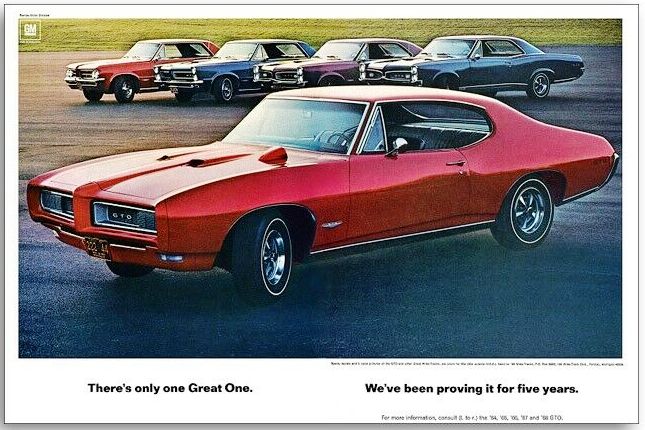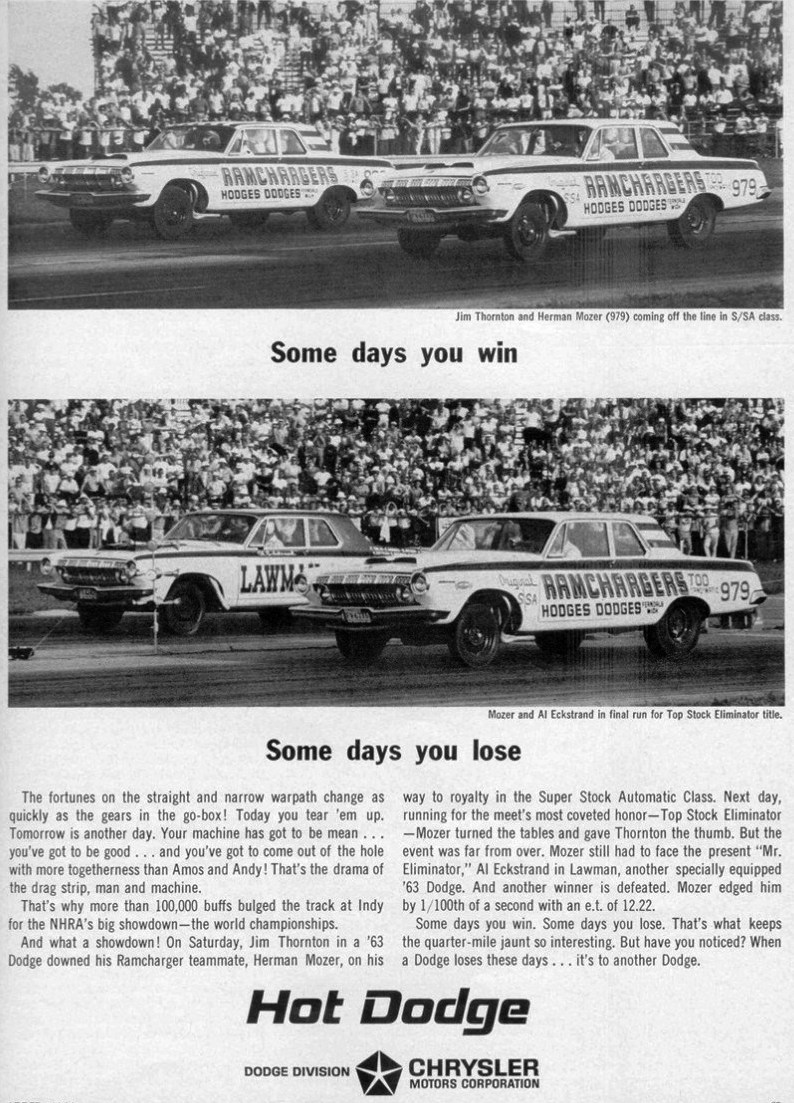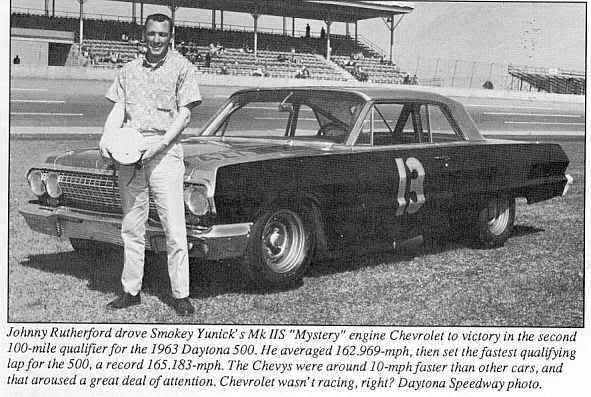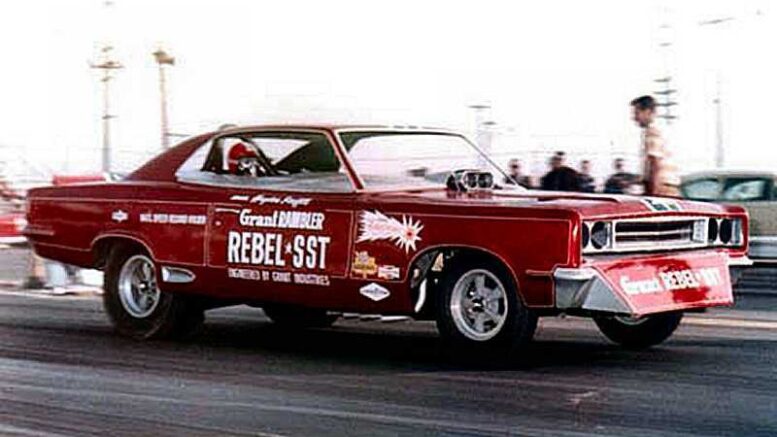Q: Greg I’ve been following your recent articles and am interested in why AMC and Rambler didn’t go the high performance route like GM, Ford and Chrysler. You said many times that AMC was more than capable with its fine performances in the 1970s.
I also vaguely remember an AMC funny car in the mid-1960s and believe it was a Marlin that came before the flip top funny cars.
I enjoy your columns and would appreciate if you can explain more and include when GM dropped out of racing in 1963. Thanks, Carl R., retired and enjoying the Florida sun in Jacksonville.
A: Carl I’m happy to oblige. We’ll have to start from the beginning because all of the American auto manufacturers agreed to stay out of high performance and end sponsoring any professional racing as far back as 1957.
Here’s how it all started. The Automotive Manufacturers Association (AMA) was an expansion of the Association of Licensed Automobile Manufacturers (ALAM), formed way back in 1903 to address the growth of the auto industry and protect patent development and any infringements. All the manufacturers joined, except for Henry Ford, and evolved into the AMA. Ford didn’t join because of the patent wording in the AMAL’s original deposition, but Ford’s son, Henry Ford II, relented and joined AMA in 1956.
As performance boomed in the 1950s and both drag racing and NASCAR oval racing experienced major growth, the Big Three manufacturers (GM, Ford, Chrysler) were all in the racing game as were independents Nash and Hudson, the latter which won many early races. The old marketing jargon “win on Sunday, sell on Monday” was born, and it wasn’t long before the car companies were promoting high-performance and racing in both print and television advertising.

GM did eventually halt its support to the major racing teams in 1963, but it beat to the showrooms both Ford and Chrysler with emphasis on the mid-size muscle car explosion. Its 1964 Pontiac GTO and 1965 Chevelle SS, both loaded with what it learned on the nation’s racetracks, were sales winners. (Compliments GM)
Then in 1957, everything changed. An AMA Resolution called for de-emphasizing performance and racing in its car advertisements as agreed upon by all members. We all know how that worked out as GM, Ford and Chrysler continued its racing programs full bore and legends of racing were born – all with factory support be it official or not.
Legends like Smokey Yunick (Chevrolet and Pontiac), Ray Nichels, Semon (Bunky) Knudsen and Pete Estes (Pontiac), Bud Moore, Bill Stroppe, Holman-Moody and the Wood Brothers (Ford/Mercury), and Cotton Owens and the Petty family (Plymouth/Dodge) became household names on the oval circuit.
Straight-line drag racers, meanwhile, like Don Nicholson, Ed Schartman and Jack Chrisman (Mercury), Bill Jenkins and Jungle Jim Liberman (Chevrolet), Jim Thornton and Herman Moser (The Ramchargers Dodge/MOPAR), Don Gay, Arnie Beswick and Jim Wangers (Pontiac) and Gas Rhonda, Les Ritchie and Bob Tasca (Ford) blitzed the quarter-mile to racing stardom. Clearly, auto racing was a big part of a car company’s consumer branding.
Not partaking in any of this was American Motors Corporation / Rambler, which stayed true to the original AMA Resolution that was voluntary and causing concerns because of its self-policing practice. Along the way, AMC did an “in your face” punch when it ran its now infamous “The only race we’re concerned with is the human race” advertising, which backfired and cost the company many sales while the muscle car boom evolved.
Running AMC at the time was George Romney, who at the time was also President of AMA. This conflict realization explains AMC’s reluctance to get involved in any corporate sponsorship deals early on. Romney’s successor, Roy Abernethy, took over AMC when Romney was successful in his Michigan gubernatorial run and in November of 1962, Abernethy was named CEO of AMC, just in time for the February “no more corporate sponsorship” GM fireworks.

Back in 1963, Dodge promoted its winning ways on the drag strip with its famous “Some Days You Win; Some Days You Lose” print ad. Even though the name Moser is misspelled (Mozer is incorrect), Dodge got the message across it was all-in on racing. (Compliments Fiat Chrysler)
In February of 1963, following increased AMA, government, insurance company and safety organization pressure, an internal letter from the GM top management to all GM brands clearly stated that any further support of race teams would not be tolerated, and all race sponsorships came to a grinding halt. And, with Pontiac and Chevrolet involved in high-tech engine development ala its 421 Super Duty Pontiac and 427 Mystery Motor Chevrolets already prepared for the Daytona 500, the announcement was looked at as a death knoll to any further corporate support.
To make a long story short, at that February’s Daytona 500 all of the Chevys, including the two (Junior Johnson and Johnny Rutherford) that won the two qualifying races and the pole position (Johnson), fell from contention with mechanical woes while Ford took the top five places with journeyman Tiny Lund winning the race. Johnson was the only Chevy driver to make it through the season, and won six more races with Mystery Motor parts that had been scavenged, begged for, and repaired over and over because of the GM edict. (Johnson raced a Bill Stroppe Mercury at the ’63 season finale race No. 55 at Riverside, finishing fifth).
Ford, meanwhile, deserves a tip of the hat. In June of 1962, Ford II withdrew from the AMA resolution noting that the car builders didn’t abide by the AMA Resolution anyway. Chrysler followed suit, as both companies knew corporate sponsorship was selling cars. GM stayed with its “no-racing” edit as the fields at NASCAR turned into Ford/Mercury and Dodge/Plymouth parades. AMC, meanwhile, also stayed true to the resolution.

Although General Motors dropped out of officially sponsoring race cars in January of 1963, this photo with cutline appeared in many newspapers and called into question how serious GM was in halting its racing programs. (Compliments Daytona International Speedway)
Yet, what resulted from GM’s no racing mandate was less Chevys and Pontiacs on the NASCAR tracks in 1964 through 1967, but way more GM sales at the dealerships. Thanks to the “race bred” 1964 GTO 389 and rare Mystery Motor 1965 Chevelle SS396, it was clear GM took what it learned at the race track and packaged it for delivery to the everyday consumer.
Bottom line? While Ford and Chrysler were winning at the tracks, GM beat everyone to the showroom selling midsize street/strip muscle cars. Ford and Chrysler would catch up but as for AMC, it took until 1967 for some real go-power to show up with a nitro funny car and a 390 powered Hurst SC/Rambler American.
In ending, that rare 1965 Marlin funny car you remember was owned by Bill Kraft Rambler from Norwalk, Ca., and driven by employee Preston Honea with power coming from a 392 Chrysler Hemi. It was a crowd please in match races and as a wheelstander. By 1967, AMC was a full-time sponsor of Hayden Proffitt’s nitro AMC funny Car, proving even AMC finally understood the importance of consumer branding via high performance.
Still, during that 1957 to 1963 era, motor racing and manufacturers went through a tough time, but in reality never really stopped its racing endeavors. And AMC made a complete about face, running numerous print advertising promoting its 1967 Rebel SST nitro funny car.
Thanks for your letter Carl and stay safe.
(Greg Zyla is a syndicated auto columnist who welcomes reader questions on collector cars, auto nostalgia and old-time racing at greg@gregzyla.com or at 303 Roosevelt St., Sayre, Pa. 18840.)



Be the first to comment on "Collector Car Corner – The day the ‘Big 3’ dropped out of auto racing – well, not really "